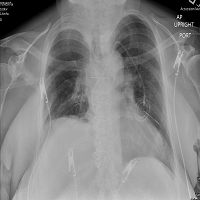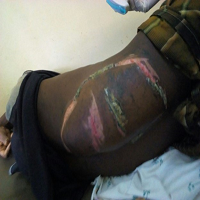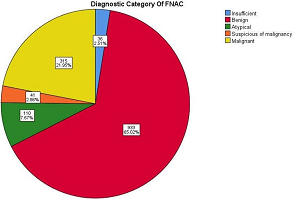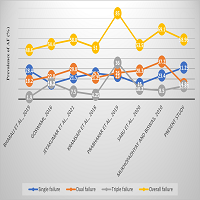INTRODUCTION
Overhead throwing athletes are at an increased risk for overuse injuries primarily of the shoulder and elbow due to the cumulative microtrauma associated with repetitive throwing.1,2,3,4 In Major League Baseball pitchers, injuries to the shoulder account for 28% of all injuries, injuries to the elbow account for 22-26%, and combined account for more missed games than injury to any other anatomical region.5,6,7 Injuries at the professional level appear to be on the rise. In May of 2014, Jose Fernandez of the Miami Marlins became the 18th player to undergo Tommy John surgery to repair the Ulnar Collateral Ligament (UCL) of his pitching elbow since the start of that Major League Baseball (MLB) season. This was just one shy of the total number of Tommy John surgeries performed in all of the previous season. At this rate, the 2014 season was on pace to surpass the record setting 2012 season of 36 surgeries; ultimately finishing with 29 players undergoing surgery.8,9 Shoulder and elbow injuries are present at other levels of baseball as well. A survey of 490 junior high, high school, and college baseball players with shoulder and elbow injuries found, that all elbow injuries and the majority of shoulder injuries were prevalent at the high school and college levels. Thirty-seven percent of the elbow injuries involved the UCL and 19.8% of all shoulder injuries were Superior Labrum Anterior to Posterior (SLAP) lesions.2
UCL injuries are of particular interest due in part to the significant amount of time required to return to elite level pitching following surgery. UCL reconstruction has been on the rise in high school-aged baseball players for several years. Literature suggests that year-round training and competition increases the likelihood of a youth baseball pitcher suffering a shoulder or elbow injury.10,11 The number of pitches thrown, the type of pitches thrown, and the overall physical fitness of the youth baseball pitcher can increase the risk for shoulder and elbow injuries.10,12,15 Fifteen percent of college-level pitchers consider injuries sustained playing youth baseball have limited current performance.14
To help reduce the risk of injury in pitchers, several recommendations have been proposed, including pitch count restrictions and required rest days.15 Youth players should limit breaking balls thrown until they have passed the developmental stages of puberty.12,15 Finally, throwing athletes should undergo biomechanical assessment encompassing whole body screening. This would ensure all aspects of the kinetic chain have the mobility and stability required to safely and effectively throw without increased risk for injury.10,16,17
With shoulder angular velocities exceeding 7250° sec-1 and varus torques at the elbow of nearly 100 Nm any weakness, tightness, or lack of neuromuscular control of the body can cause subtle changes in the pitching motion.6,7 These subtle changes in the pitching motion can alter the kinetic chain, which may increase physical stresses on other anatomical areas such as the elbow and shoulder. Over time these changes can lead to tissue failure and injury.5 Being able to effectively and efficiently screen for individuals that have kinetic chain deficits may help to identify individuals who are at an increased risk for injury and allow the athlete to receive proper training, conditioning, and intervention to prevent injury. The purpose of this article is to propose a novel screening assessment for the overhead throwing athlete using the essential components of the throwing kinetic chain, which can be used as a pre-participation assessment of injury risk or for return to sport criteria.
BACKGROUND
Overhead throwing is a movement that is not isolated to the shoulder and elbow. It is a complex interaction of total body strength, range of motion, static and dynamic balance, proprioception, and neuromuscular coordination. All of these systems need to work together to effectively transfer energy from the ground, through the lower extremities, to the core, and out the upper extremity. The pelvis and torso contribute as much as 50% to the kinetics of throwing.3,18 Any deficits along this kinetic chain can place added physical stress to other anatomical regions required to complete the task of throwing a baseball. Specifically in overhead throwing, an impaired ability to control the position of the trunk and legs can alter the position of the arm and potentially lead to injury of the shoulder and elbow.3,4,11,16,18,19,20,21,22,23,24 In order to properly screen, train, and rehabilitate a throwing athlete, an approach that examines balance, core stability, and lower extremity mobility and stability is necessary.16,19,22
METHODS
The screen presented in this article will encompass testing of mobility and stability of the shoulder, trunk/core, and lower extremities. Athletes are taken through a series of tests and measure designed to assess critical components of a pitching delivery. These measures address tissue irritability, range of motion, coordination and strength. The rationale of these assessment techniques are described further in the discussion. While this screen examines much of the kinetic chain required to safely and effectively pitch, it does not cover all aspects of the chain such as a detailed examination of the thoracic spine or scapula. This is by design, as the purpose of a screen is to quickly identifies those at risk for injury so these deficits can be addressed, or the individual can be referred to a healthcare professional if needed.
DISCUSSION
Shoulder Screening
The concept of Glenohumeral Internal Rotation Deficit (GIRD) has been well documented and is defined as a loss of internal rotation range of motion of the throwing arm compared to the non-throwing arm, anywhere from 12-20°.6,11,25 Historically, GIRD was thought to be a primary contributing factor to both shoulder and elbow injuries in overhead throwing athletes due to the concomitant hyperexternal rotation associated with the loss of internal rotation. GIRD has been attributed to tightness in the posterior glenohumeral joint capsule, myofascial restrictions, laxity of anterior glenohumeral joint capsule, and osseous changes that result in humeral retroversion. Humeral retroversion is due to the torque placed on the humerus with throwing during skeletal maturity resulting in apparent increases in external rotation with loss of internal rotation without true changes at the glenohumeral joint.25 Due to recent scientific evidence demonstrating that throwing athletes with GIRD do not exhibit capsular limitations, the latter theory has gained more popularity.6,26 Humeral retroversion and GIRD is normal and advantageous for the overhead pitcher, and may not be an adequate predictor of injury.
However, a significantly strong inverse relationship exists between humeral retroversion of the throwing arm and severe injuries to the shoulder (r=-0.90) and elbow (r=-0.85), indicating that greater humeral retroversion correlates with less severe arm injury.25 Pitchers with GIRD are just as likely to develop an elbow injury as those without GRID (odds ratio=1.0).7 Similar results regarding shoulder injuries were found when comparing those with and without GIRD (odds ratio=1.9), but these results were not statistically significant.26 Polster, et al. demonstrated a 30% reduction in injury risk for every 10° of humeral retroversion of the dominant arm compared to the non-dominant arm.25 These results suggest that GIRD due to osseous torsion may be advantageous for pitchers as humeral retroversion will allow the thrower to move through a longer throwing arc and achieve greater throwing velocity without additional physical stress to the glenohumeral joint and its supporting structures.25
Total Rotational Motion (TRM), defined as the sum of passive glenohumeral external rotation and internal rotation at 90° of abduction in the plane of the scapula, is considered deficient if there is a side-to-side difference of more than 5°.6 The odds ratio for the development of a shoulder or elbow injury in a pitcher with a TRM deficit was 2.5 and 2.6 respectively, and both were found to be statistically significant.6,7 Interestingly, 78% of those pitchers that developed a shoulder injury had a throwing arm TRM greater than 176° suggesting that there is a limit to how much motion should be achieved.6 A flexion deficit is defined as a passive glenohumeral flexion range of motion side-to-side difference of more than 5°, and those pitchers with a flexion deficit were found to be significantly more likely to develop an elbow injury (odds ratio=2.8) when compared to those without a flexion deficit.7 These results are echoed in another study conducted by Garrison, et al.11
The above evidence suggests that GIRD alone is not a valid predictor for the development of shoulder or elbow injuries in baseball pitchers, but measurements of TRM deficits and glenohumeral flexion deficits appear to be better predictors of injury. Based upon evidence, measurements of shoulder TRM and passive shoulder flexion would be more valuable and provide greater assessment of injury risk than measurements of GIRD and should be included in a pre-participation screen and made part of return to sport criteria.
Balance and Core Stability Screening
Assessment techniques such as single leg balance, front and side planks, and the Y-Balance test can be used to evaluate the static and dynamic lower extremity and core function. Prior studies have shown no significant difference between overhead athletes with a non-traumatic shoulder injury compared to those without an injury when it comes to measures of core function utilizing the front plank, side plank, double straight leg lowering test, and Sorensen’s test.23 A significant difference existed between the two groups when core stability and neuromuscular control is tested using single leg balance, demonstrating that those with a shoulder injury had decreased single leg balance.23 In the context of the throwing kinetic chain, without adequate lower extremity and core stability, energy transfer is compromised, which can place excessive physical stress on distal structures such as the shoulder and elbow.
The lower extremity and core function dynamically during overhead throwing and do so in multiple planes of movement. The Y-Balance is a reliable and valid test of dynamic lower extremity mobility and stability, core stability, and neuromuscular postural control in multiple directions, and has been shown to be a valid predictor of injury risk.11 High school baseball pitchers with a confirmed UCL tear demonstrated significantly decreased composite scores on the Y-Balance test on both lower extremities compared to pitchers without a UCL tear.11 The deficits in dynamic balance, lower extremity range of motion, core stability, and postural control associated with poor performance on the Y-Balance test can create dysfunctions throughout the kinetic chain and may successfully predict those overhead throwing athletes that are more likely to develop shoulder and elbow injuries.
In an effort to make this proposed screen efficient and allow for many athletes to be screened in a short amount of time, multi-directional testing of the Y-Balance test was reduced to a single plane of movement. Sagittal plane motion of the hip and knee can account for 90% of the variance seen in medial and lateral lower extremity reaches.20 In another study examining basketball players, only the anterior reach portion was predictive of injury, with those with a right/left reach difference of greater than or equal to 4 cm being three times more likely to be injured.27 This evidence justified the use of including only the anterior reach portion of the Y-Balance test to efficiently screen dynamic core lower extremity neuromuscular control. Recognizing that tri-planar function is necessary for efficient movement and performance, athletes would need to be further assessed in other planes when the screen identifies an individual with deficits.
Hip and Lower Extremity Mobility and Stability Screening
Several studies note the critical role of the pelvis and lower extremity sequencing during the overhead throwing delivery. Campbell, et al. used surface EMG on bilateral lower extremity musculature on healthy college baseball pitchers, demonstrating that during the early phases of throwing all lower extremity musculature demonstrate minimal to moderate activity, indicating that they are acting primarily as stabilizers.19 As the pitcher progresses through foot contact, cocking phase, and ball release, there is a gradual increase in nearly all trailing leg muscle activity to greater than 100% of Maximal Voluntary Isometric Contraction (MVIC) with the exception of the rectus femoris.19 On the stride leg at foot contract, the gluteus maximus, rectus femoris, and gastrocnemius demonstrated significantly high activity greater than 100% MVIC. All lower extremity muscle activity tested on the stride leg peaked from the cocking phase to follow-through, and all were well above 100% MVIC.19 It was concluded that the gradual increase in trial leg muscle activity from foot contact to ball release and the peak values of stride leg muscle activity through the follow-through phase suggest that the pitcher does not “push off the rubber” when throwing, but rather is more a “controlled fall.” 19 The gluteus maximus of the trailing leg may contribute to pelvic rotation velocity, but the stride leg musculature is acting as a base that must eccentrically control the momentum of the forward moving pelvis, trunk, and upper extremity critical for generating ball velocity. 19
If the overhead throwing athlete does not possess the necessary mobility and stability to control the moving trunk over the striding lower extremity, the athlete may compensate by spending less time on the leg and/or changing the position of the trunk and arm. This in turn can place added stress on the shoulder and elbow with throwing and can lead to injury. One such compensation would be inadequate trunk flexion or adopting a more upright posture when throwing so as not to have to eccentrically control a forward flexing trunk over the striding leg. This specific compensation can lead to shoulder and elbow injuries in pitchers.
Other studies have described gluteal muscle activation and its relationships with pelvis and trunk kinematics during pitching, noting similar results as Campbell, et al.18 Stride leg gluteus maximus and medius activity were both greater than 150% of MVIC as the pitcher progressed from the foot contact to ball release phases of throwing, with the greatest activity at the late cocking phase of throwing.18 There was a statistically significant positive correlation between trailing leg gluteus maximus activity and increased pelvic rotation velocity at maximal glenohumeral external rotation (r=0.73) and at ball release (r=0.831).18 This suggests that the changes seen in pelvic rotation velocity are strongly related to gluteus maximus activity and account for a large portion of the variance seen in pelvic rotation during pitching.
The rate of pelvic rotation is significantly related to the rate of torso rotation (r=0.917) at the phase of maximal glenohumeral external rotation suggesting that hip and pelvic movement during throwing strongly impacts what happens at the torso, which can impact what happens at the throwing arm.3 Studies have found that if the sequence of pelvic and torso rotation is not timed appropriately, the pitcher will throw in an “open position” or a “closed position,” and place greater physical stress on both the shoulder and elbow that could potentially increase the risk for injury.1,3,4,18,22
Laudner, et al. demonstrated a positive correlation between total rotational hip motion of the lead leg measured in prone with shoulder external rotation torque in National Collegiate Athletic Association (NCAA) Division I collegiate baseball pitchers (r=0.56).14 A significant relationship was also found with total rotational hip motion of the trailing leg and shoulder horizontal adduction during throwing (r=0.43).21 The authors concluded that limitations in hip mobility of the lead leg can place added torque on the shoulder, and that limitations in hip mobility of the trailing leg can cause pitchers to “throw across their bodies” and further stress the shoulder and limit performance.21 If hip rotation is not controlled during pitching, then the pitcher risks throwing in an “open position” which can prematurely initiate the cocking phase of throwing which has been shown to place greater torque on the shoulder and potentially lead to injury.24 Typically, transverse plane hip function is assessed with active and passive range of motion measurements in seated and in the prone positions. Isolated, open kinetic chain measurements of the hip would not adequately assess the transverse plane mobility and stability of the entire lower extremity kinetic chain. Thus, total lower extremity rotation mobility and stability needs assessed in a more functional, closed kinetic chain fashion in order to adequately screen for kinetic chain deficits and injury risk in throwers, which is depicted in this proposed screen.
Currently, there are no standards that exist for the degree of functional transverse plane lower extremity mobility and stability necessary to pitch. There is controversy in the literature as to whether rotation should be symmetrical bilaterally, and whether internal rotation should be equal to external rotation within a single lower extremity.21,24 Based on clinical experience, it was decided that a total lower extremity rotational arc of motion of 165° was needed to safely and effectively pitch with sound biomechanics. External rotation would account for 90°, and internal rotation would account for 75°. These measurements should be symmetrical bilaterally.
Provocative Tests
Two clearing tests were incorporated into this proposed injury screen, a shoulder impingement test and a valgus stress test to the elbow performed at 90° of elbow flexion. These two tests were added to determine the presence of pain and pathology within the shoulder and elbow, and will alert the screener to refer the athlete to a healthcare professional.
CONCLUSION
Baseball pitching requires a complex interaction of lower extremity mobility and stability, hip and pelvic mobility and stability, and core stability to effectively transfer energy from the ground, through the shoulder and elbow, and finally to the ball. If there is dysfunction anywhere along this kinetic chain, the potential for pain, performance reduction, and injury increases; especially at the shoulder and elbow. The proposed functional screen presented in this article can therefore be used to assess these major components essential to throwing, and can alert both coaches and athletes to potential injury risks.
CLINICAL IMPLICATIONS AND LIMITATIONS
Although the existing literature presented in this article is used to provide support for a functional kinetic chain injury screen for baseball pitchers, this evidence can be used to support rehabilitation principles for the inclusion of lower extremity and core training in the treatment of those with shoulder and elbow pathologies related to overhead throwing or similar activities. It can also be used to determine an athlete’s readiness to return to throwing following surgical procedures such as a UCL reconstruction. For instance, an athlete would have to successfully pass this proposed screen prior to the initiation of a return to throwing program.
FURTHER RESEARCH
There is little to no evidence that currently exists on the functional assessment of the lower extremity and core as it relates to overhead throwing. As such, there are no standards that exist regarding the degree of mobility and stability needed to throw while minimizing the risk for injury. The standards chosen for this screen were based on knowledge of sport and clinical experience in the treatment of baseball pitchers with shoulder and elbow pathologies. Further research is needed to ascertain evidence-based standards and the effectiveness of this screen at predicting injury.
CONFLICTS OF INTEREST
This article is originally written by the authors listed, and has not been published before. The authors certify that they have no affiliations with or financial involvement in any organization or entity with a direct financial interest in the subject matter or materials discussed in the manuscript.
CONSENT
All participants depicted in the appendix are either one of the authors, or they have been de-identified.







